Active Directory (AD)
Microsoft’s system for managing users, devices, and security policies across a business network.
Antivirus Software
Software that prevents, detects, and removes malicious programs like viruses, worms, and Trojans.
Artificial Intelligence (AI)
Computer systems that simulate human intelligence for automation, analytics, or security tasks.
Authentication
Verifying a user’s identity before granting access to systems or data.
Backup
A copy of files/data stored separately to restore information in case of loss or corruption.
Bandwidth
The amount of data that can travel over an internet connection in a given time.
Bring Your Own Device (BYOD)
A policy that allows employees to use personal devices for work.
Business Continuity
The ability for a company to keep operating during and after unexpected disruptions.
Cloud Computing
Delivery of IT resources (servers, storage, apps) over the internet instead of local hardware.
Compliance
Adhering to laws, regulations, and industry standards for data security and IT operations.
Cybersecurity
Practices and tools that protect systems, networks, and data from unauthorized access or attack.
Data Breach
Unauthorized access or disclosure of confidential or sensitive data.
Data Center
A facility hosting servers, storage, and networking equipment for business IT operations.
Data Encryption
Converting information into a secure code to prevent unauthorized access.
Disaster Recovery (DR)
Plans and processes to restore IT systems and data after cyberattacks or major failures.
Distributed Denial of Service (DDoS)
An attack that overwhelms a network or website with traffic to cause downtime.
Domain Name System (DNS)
Translates website names (e.g., example.com) into IP addresses—the internet’s “phonebook.”
Email Security
Protection against email-borne threats like phishing, spam, and malware.
Endpoint
Any device connected to a network—laptops, desktops, tablets, or smartphones.
Endpoint Detection and Response (EDR)
Security that monitors endpoints for suspicious behavior and responds to threats.
Firewall
Hardware/software that controls network traffic to block threats based on security rules.
Help Desk
Technical support service for troubleshooting IT issues.
Hybrid Cloud
An environment combining on-premises infrastructure with public/private cloud services.
Infrastructure as a Service (IaaS)
Renting compute, storage, and networking from a cloud provider instead of buying hardware.
Information Technology (IT)
Use of computers, networks, and systems to store, process, and share information.
Internet of Things (IoT)
Everyday devices connected to the internet that collect and share data.
Intrusion Detection System (IDS)
Monitors network traffic for suspicious or malicious activity.
Intrusion Prevention System (IPS)
Detects and actively blocks suspicious network activity.
IT Infrastructure
The hardware, software, networks, and facilities powering business IT operations.
Latency
The delay between sending and receiving data across a network.
Local Area Network (LAN)
A private network connecting devices within a limited area, like an office.
Managed Service Provider (MSP)
A company that remotely manages IT systems and support on a subscription basis.
Malware
Malicious software designed to harm, exploit, or steal from computers and networks.
Multi-Factor Authentication (MFA)
Security requiring multiple verification steps (e.g., password + fingerprint).
Network Monitoring
Continuous observation of a network to detect performance issues or intrusions.
On-Premises
IT systems or software installed and run within a company’s own facilities.
Operating System (OS)
Software that manages computer hardware and enables other programs (e.g., Windows, macOS, Linux).
Patch Management
The process of updating software with fixes to improve security and performance.
Phishing
Deceptive emails, calls, or sites that trick users into revealing sensitive information.
Platform as a Service (PaaS)
Cloud tools for building apps without managing servers and underlying infrastructure.
Private Cloud
A cloud environment dedicated to one organization for greater control and security.
Public Cloud
Shared cloud services offered by providers like AWS, Azure, or Google Cloud.
Ransomware
Malware that encrypts files and demands payment to restore access.
Remote Desktop
Technology that allows access to a computer or network from another location.
Remote Monitoring and Management (RMM)
Tools MSPs use to monitor and maintain systems without being onsite.
Scalability
The ability for systems to handle growth and increased demand without issues.
Service Level Agreement (SLA)
A contract defining service levels, including uptime guarantees and response times.
Single Sign-On (SSO)
One login grants access to multiple applications.
Software as a Service (SaaS)
Cloud-hosted applications accessed via the internet (e.g., Microsoft 365, Zoom).
Spam
Unwanted or unsolicited emails, often used for scams or advertising.
Spyware
Malware that secretly monitors and collects information from a user’s device.
Trojan Horse
Malware disguised as legitimate software to trick users into installing it.
Virtual Machine (VM)
Software that simulates a separate computer environment on existing hardware.
Virtual Private Network (VPN)
A secure, encrypted tunnel for connecting to a private network over the internet.
Virus
Malware that spreads by attaching itself to files and programs.
Voice over Internet Protocol (VoIP)
Phone service delivered over the internet instead of traditional phone lines.
Vulnerability
A weakness in software, hardware, or processes that attackers can exploit.
Wide Area Network (WAN)
A network that connects multiple locations over large distances, often using the internet.
Zero-Day Exploit
An attack that targets a software vulnerability before a fix is available.
Zero Trust Security
A model that assumes no user or device is trusted by default—verify everything.






